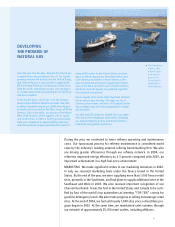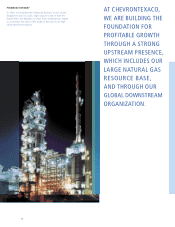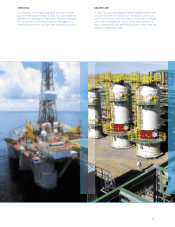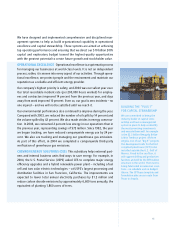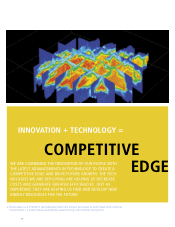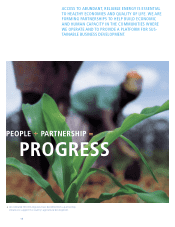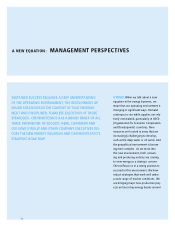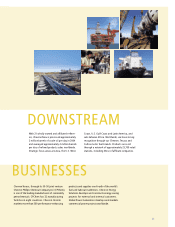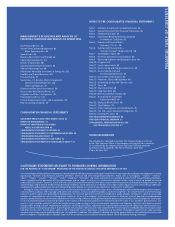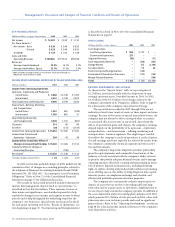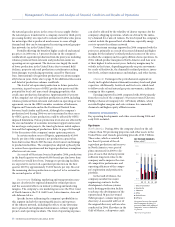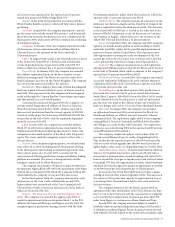Chevron 2004 Annual Report Download - page 21
Download and view the complete annual report
Please find page 21 of the 2004 Chevron annual report below. You can navigate through the pages in the report by either clicking on the pages listed below, or by using the keyword search tool below to find specific information within the annual report.
At ChevronTexaco, we believe that how we do business is as important as
the business we do. We are committed to corporate responsibility and take
special care to ensure that our presence in a community builds not only eco-
nomic capacity, but also human capacity.
How we operate in Africa is a good example. We are one of the largest U.S.
private investors in sub-Saharan Africa, an area that holds enormous poten-
tial for adding to the world’s energy supplies. Despite significant progress,
the region remains one of the world’s most challenging in terms of social
and economic development. By forming public-private partnerships, we are
creating sustainable programs to expand the capacity of local communities
to become economically self-sufficient and enhance their quality of life.
The largest of these partnerships is a $50 million initiative to help Angola
rebuild from its long civil war. Approximately 40 percent of the funds are in
support of agricultural development, an area that offers the greatest potential
to increase family income. At the end of 2004, an estimated 700,000 Angolans
had benefited from seeds, tools, food and technical aid that had been given to
assist small farms. Partners include the U.S. Agency for International Develop-
ment, the United Nations Development Program and other organizations.
Additional efforts are under way to develop small- and medium-sized busi-
nesses in Angola. Funding has been committed to support the opening of the
country’s first micro-credit bank. Partners are European development insti-
tutes and the International Finance Corporation, an arm of the World Bank.
A number of the company’s major operations are
in countries threatened by HIV/AIDS. In early 2005, we began implementing
a corporatewide policy to provide employees access to care and treatment
where available. We also continue to build public-private partnerships to
improve overall health care in the communities where we operate. In Latin
America, the Trust for the Americas recognized us for our health and dental
care efforts as well as educational initiatives, particularly in Venezuela.
> Bottom, right: We are partnering with a nonprofit pediatric hospital in Venezuela to provide health and
dental care to youngsters, such as Alicia Fernandez, who live in Zulia State.
DEVELOPING ENERGY
AND PEOPLE
Training and developing the local
work force is one of our highest
priorities and one of the most
important ways we contribute to
a country’s social and economic
capacity. One example is the
Partitioned Neutral Zone (PNZ)
between Saudi Arabia and Kuwait.
Over the years, we have prepared
Saudi employees to assume profes-
sional and managerial positions for
the operations there. Today, more
than 90 percent of PNZ employees
are from the national work force.
19


